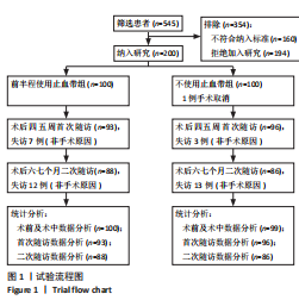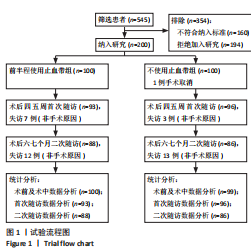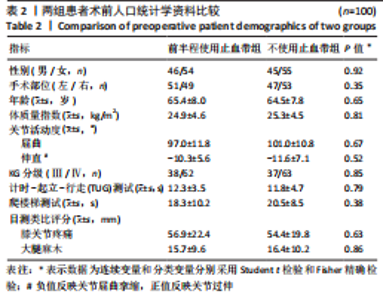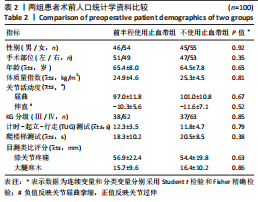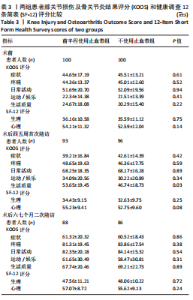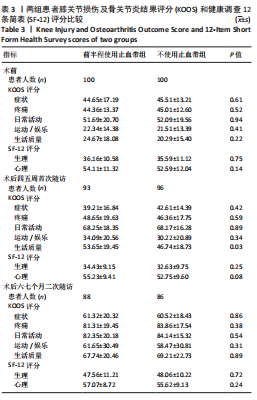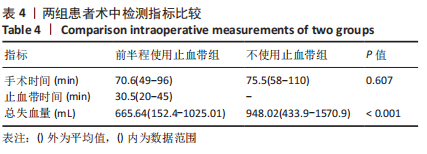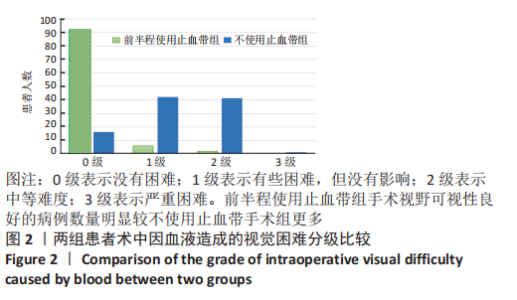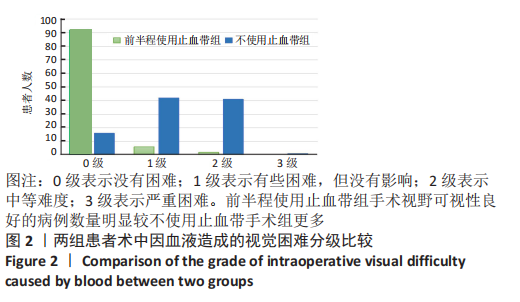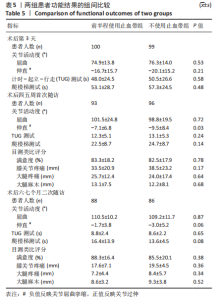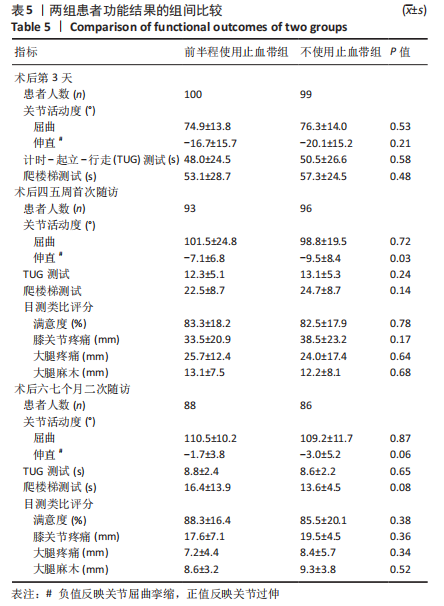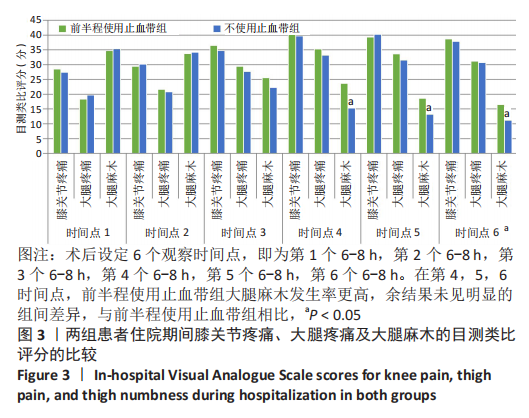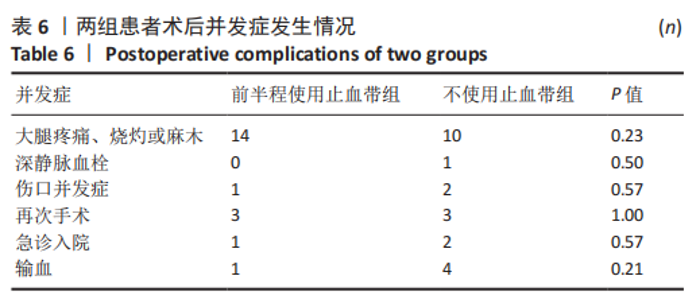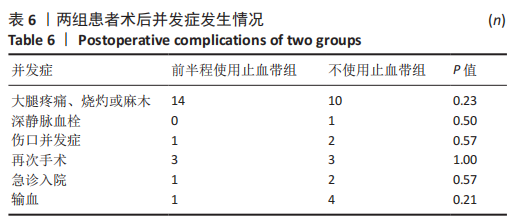[1] RÖHL S, SCHÜCKING B. Does Tourniquet Time in Primary Total Knee Arthroplasty Influence Clinical Recovery? J Knee Surg. 2014;28(4): 335-342.
[2] SCHNETTLER T, PAPILLON N, REES H. Use of a Tourniquet in Total Knee Arthroplasty Causes a Paradoxical Increase in Total Blood Loss. J Bone Joint Surg Am. 2017;99(16):1331-1336.
[3] EJAZ A, LAURSEN AC, KAPPEL A, et al. Faster recovery without the use of a tourniquet in total knee arthroplasty . Acta Orthopaedica. 2014; 85(4):1-5.
[4] 赵俊涛,郑成胜,王博. 全膝关节置换中止血带的优化应用方案[J]. 中国组织工程研究,2019,23(20):14-19.
[5] ARTHUR JR, SPANGEHL MJ. Tourniquet Use in Total Knee Arthroplasty. J Knee Surg. 2019;32(8):719-729.
[6] ALCELIK I, POLLOCK RD, SUKEIK M, et al. A Comparison of Outcomes With and Without a Tourniquet in Total Knee Arthroplasty. J Arthroplasty. 2012;27(3):331-340.
[7] 王坤正.中华医学会骨科学分会关节外科学组. 骨关节炎诊疗指南(2018年版)[J]. 中华骨科杂志,2018,38(12):705-715.
[8] GOEL R, RONDON AJ, SYDNOR K, et al. Tourniquet Use Does Not Affect Functional Outcomes or Pain After Total Knee Arthroplasty: A Prospective, Double-Blinded, Randomized Controlled Trial. J Bone Joint Surg Am. 2019;101(20):1821-1828.
[9] GAO FQ, LI ZJ, ZHANG K, et al. Four Methods for Calculating Blood-loss after Total Knee Arthroplasty. Chin Med J. 2015;128(21):2856-2860.
[10] GULER O, MAHIROGULLARI M, ISYAR M, et al. Comparison of quadriceps muscle volume after unilateral total knee arthroplasty with and without tourniquet use. Knee Surg Sports Traumatol Arthrosc. 2015;24(8):1-11.
[11] DENNIS DA, KITTELSON AJ, YANG CC, et al. Does Tourniquet Use in TKA Affect Recovery of Lower Extremity Strength and Function? A Randomized Trial. Clin Orthop Relat Res. 2016;474(1):1-9.
[12] KENNEDY DM, STRATFORD PW, WESSEL J, et al. Assessing stability and change of four performance measures: a longitudinal study evaluating outcome following total hip and knee arthroplasty. BMC Musculoskelet Disord. 2005;6(1):1-12.
[13] ALGHADIR A, ANWER S, BRISMÉE JM. The reliability and minimal detectable change of Timed Up and Go test in individuals with grade 1-3 knee osteoarthritis. BMC Musculoskelet Disord. 2015;16(1):174-180.
[14] CHEN S, LI J, PENG H, et al. The influence of a half-course tourniquet strategy on peri-operative blood loss and early functional recovery in primary total knee arthroplasty. Int Orthop. 2014;38(2):355-359.
[15] HUANG ZY, XIE XW, LI LL, et al. Intravenous and Topical Tranexamic Acid Alone Are Superior to Tourniquet Use for Primary Total Knee Arthroplasty: A Prospective, Randomized Controlled Trial. J Bone Joint Surg. 2017;99(24):2053-2061.
[16] SINGH G, HAN F, KAKI RR, et al. Does Limited Tourniquet Usage in Primary Total Knee Arthroplasty Result in Better Functional Outcomes? Ann Acad Med Singapore. 2015;44(8):302-306.
[17] RAMA KR, APSINGI S, POOVALI S, et al. Timing of tourniquet release in knee arthroplasty. Meta-analysis of randomized, controlled trials. J Bone Joint Surg Am. 2007;89(4):699-705.
[18] MORI N, KIMURA S, ONODERA T, et al. Use of a pneumatic tourniquet in total knee arthroplasty increases the risk of distal deep vein thrombosis: A prospective, randomized study. Knee. 2016;23(5):887-889.
[19] HERNANDEZ AJ, ALMEIDA AM, FÁVARO E, et al. The influence of tourniquet use and operative time on the incidence of deep vein thrombosis in total knee arthroplasty. Clinics (Sao Paulo). 2012;67(9): 1053-1057.
[20] TIE K, HU D, QI Y, et al. Effects of Tourniquet Release on Total Knee Arthroplasty. Orthopedics. 2016;39(4):e642-e650.
[21] COX EM, COHEN ER, MELLECKER CJ, et al. Intraoperative femoral nerve stimulation in evaluation of patellar tracking: tourniquet effects and catheter placement. Iowa Orthop J. 2010;30(30):104-108.
|
